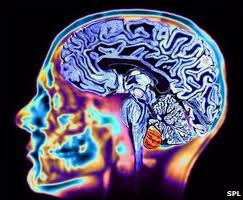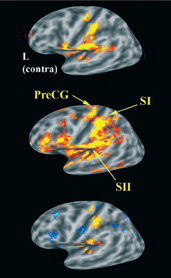 As I read the increasing number of medical studies on the efficacy of acupuncture, I am learning to become more aware of the qualities which make a study valid or flawed. There are the professional guidelines of controls, double blind participants and researchers, and methods of standardizing results for large groups in a study. Medical research has developed very clear methods to calibrate success in all these areas through statistical calculations which remove results from the subjective realm, of patient feelings or potential placebo effect, and quantify them in the field of mathematics. Understanding studies through these rigorous methods will be a continual effort on my part, until then, I am thankful that many researchers publish a synopsis or abstract for easier interpretation by non-statistics majors.
As I read the increasing number of medical studies on the efficacy of acupuncture, I am learning to become more aware of the qualities which make a study valid or flawed. There are the professional guidelines of controls, double blind participants and researchers, and methods of standardizing results for large groups in a study. Medical research has developed very clear methods to calibrate success in all these areas through statistical calculations which remove results from the subjective realm, of patient feelings or potential placebo effect, and quantify them in the field of mathematics. Understanding studies through these rigorous methods will be a continual effort on my part, until then, I am thankful that many researchers publish a synopsis or abstract for easier interpretation by non-statistics majors.
Beyond the scientific methods lies an aspect of these acupuncture studies that I do find a bit troubling. For many, but not all, there is a lack of use of Traditional Chinese Medicine disease diagnosis, pattern discrimination, and a subsequent matching treatment plan. Rather, many of the studies, use empirical points for their treatment protocol. For example, a point on the arm or leg, that commonly aides in digestion, will be used in a study on Irritable Bowel Syndrome. This is done without making the pattern determination which would indicate that the point is correct for that patient, correct only if used in conjunction with other points, or completely inappropriate for the patient altogether. Empirical points are often used because they very often provide some level of benefit, however, in a study of 150 people, one would assume that there are a wide variety of causative factors for their developing this common digestive ailment.

Invariably, these studies will find that some people improved slightly, often enough to warrant continued treatment, some stayed the same, and some patients got worse with treatment over a defined period of time. Within professional Chinese medicine one may find four, five, or six causative factors for the western disease diagnosis of Irritable Bowel Syndrome. With this in mind, it would be logical that not all the participants in the study would improve, or, even stay the same in regards to their symptoms.
What can be done about this problem in methodology with acupuncture research?
Well, I am pleased to see a increasing trend in the research, coming out of Europe, which is aiming to more accurately represent the standards of practice of Traditional Chinese Medicine, TCM, in China. I was recently handed an article relating to a study from the American Headache Society titled: Traditional Acupuncture in Migraine: A Controlled, Randomized Study (http://www.ncbi.nlm.nih.gov/
This study, conducted at the University of Padua – Department of Medico-Surgical Specialties, used TCM guidelines in conjunction with western disease definitions of migraine headache without aura.
“Migraine prevalence is high and affects a relevant rate of adults in the productive phase of their life. Acupuncture has been increasingly advocated and used in Western countries for migraine treatment, but the evidence of its effectiveness still remains weak. A large variability of treatments is present in published studies and no acupoint selection according to TCM has been investigated so far; therefore, the low level of evidence of acupuncture effectiveness might partially depend on inappropriate treatment.” http://www.ncbi.nlm.nih.gov/
This study identified seven different possible patterns for the cause of migraine without aura and gave treatments defined by the methodology of TCM. A control group on medication was tested against both a mock acupuncture and a traditional acupuncture group with patients blinded as to which group they were participating in. While both the medication and mock acupuncture group showed initial improvement, possibly as a result of the placebo effect, the traditional approach to acupuncture yielded greater results and with improvement continuing beyond the initial treatments and with results lasting beyond the completion of the study. Patients were treated with different points, based on their defined pattern, and yet the results were even more promising than either mock acupuncture or the use of standard empirical points for head pain.

These studies are encouraging to find in the western research literature. Ironically, there are literally hundreds of these being done in China each year, but they are often disavowed by western researchers for being poorly constructed, too underfunded, or not well defined in outcome. Even more frustrating is the comment that there is no evidence for efficacy of acupuncture in the literature, simply because it is only written in Chinese. I am excited to know that there will be so much more to come in the future years of my profession to shed light to the thousands of years of our past.
